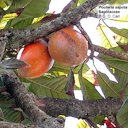| Mamey Sapote - Pouteria sapota | |||||||||||||||||||||||||
|---|---|---|---|---|---|---|---|---|---|---|---|---|---|---|---|---|---|---|---|---|---|---|---|---|---|
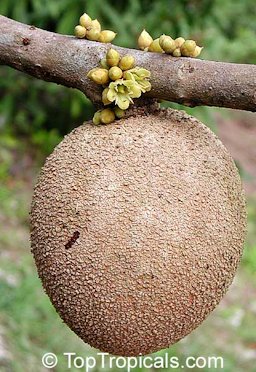 Fig. 1 Pouteria sapota fruit  Fig. 2  Mamey sapote is one of many tropical fruits found in the ARS germplasm repository in Mayagüez, Puerto Rico. 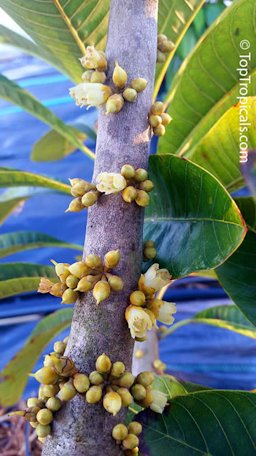 Fig. 3 Flower and fruit habit 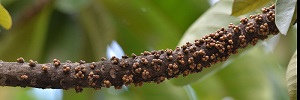 Fig. 4  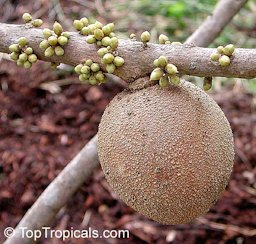 Fig. 5  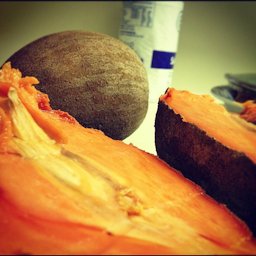 Fig. 9  Yummy mamey sapote P. sapota 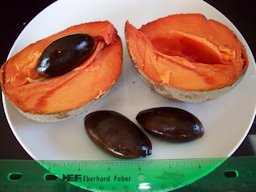 Fig. 10  Mamey sapote 'Pantin'  Fig. 11  Seed germinating 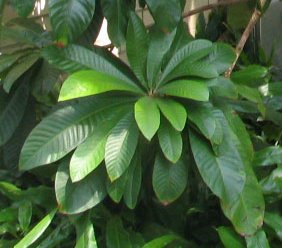 Fig. 12 Cluster of sapote leaves. The leaves are glossy and dark green, ribbed by veins. 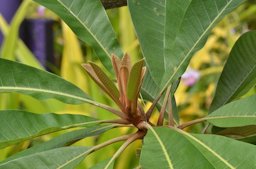 Fig. 13  New growth  Fig. 14  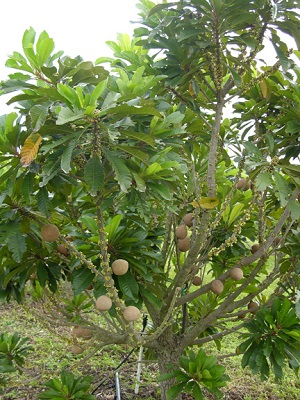 Fig. 15  Young tree with fruit  Fig. 16  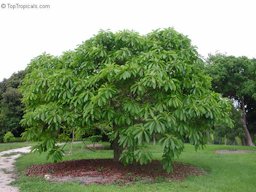 Fig. 17  Mature tree 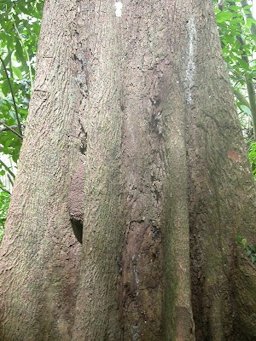 Fig. 18  Lower trunk 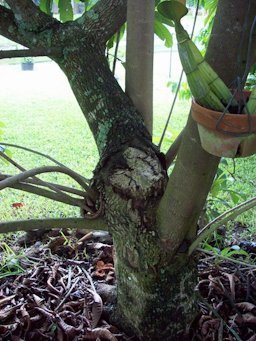 Fig. 19  Mamey sapote (P. sapota) 'Pantin' this tree was toppled by hurricane Wilma (2005), it has since made a full recovery  Fig. 20  P. sapota from Venezuela  Fig. 21  A bunch of mamey fruit in a market in Tepoztlan, Mexico 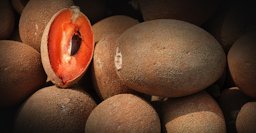 Fig. 22  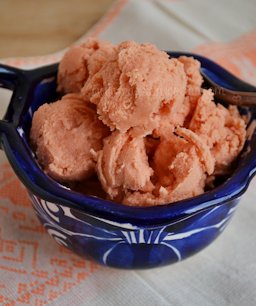 Fig. 23 |
Scientific
name Pouteria sapota (Jacq.) H.E. Moore & Stearn Common names Sapota, zapote, zapote colorado, zapote mamey, lava-zapote, zapotillo, mamey sapote, mamee sapote, mamee zapote, mamey colorado, mamey rojo, mammee or mammee apple or red sapote. In El Salvador, it is known as zapote grande, in Colombia as zapote de carne; in Cuba, it is mamey, which tends to confuse it with Mammea americana L., a quite different fruit widely known by that name. The usual name in Panama is mamey de la tierra; in Haiti, sapotier jaune d'oeuf, or grand sapotillier; in Guadeloupe, sapote à creme; in Martinique, grosse sapote; in Jamaica, it is marmalade fruit or marmalade plum; in Nicaragua, it may be called guaicume; in Mexico, chachaas or chachalhaas or tezonzapote; in Malaya and the Philippines, chico-mamei, or chico-mamey 3 Synonyms P. mammosa (L.) Cronquist; Lucuma mammosa Gaertn.; Achradelpha mammosa Cook; Vitellaria mammosa Radlk.; Calocarpum mammosum Pierre; C. sapota Merrill; Sideroxylon sapota Jacq. 3 Relatives Green sapote P. viridis Cronq.; sapodilla Manilkara zapota; satin leaf Chrysophyllum oliviforme; caimito C. cainito; abiu P. caimito Family Sapotaceae Origin Mexico and Central America lowlands 5 USDA hardiness zones 10b-11a Uses Fruit; landscape specimen Height 40 ft (12.2 m) in Florida; may exceed 60 feet (18.3 m) in more tropical regions 5 Spread Large spreading canopy Crown Irregular; spreading and open Plant habit Large, erect to spreading trees; thick central trunk; few large limbs 5 Growth rate Moderate Trunk/bark/branches Short, stout trunk; thick branches; severed twigs exude sticky latex Pruning requirement After harvest, trees should be pruned keeping the tree 12-15 ft (3.7-4.6 m) Leaves Large, up to 12 in. (30.5 cm) long, 4in. (10.2 cm) wide; underside is lighter green or brownish; clustered at the end of small branches 5 Flowers Small, perfect, whitish, almost sessile flowers are produced abundantly along small branches 1/2-2 in. (1.3-5.1 cm), and tend to cluster towards the ends of the stems 5 Fruit Large berry, ovoid to ellipsoid; 3-8 in. (7.6-20.3 cm); pulp salmon pink to red, soft, smooth; skin thick, woody, russet brown scruffy surface; will take a year to mature 4 Season May through October depending on cultivar USDA Nutrient Content pdf Light requirement Full sun Soil tolerances Grows well in a wide variety of well-drained soils, from heavy clays to the limestone and sandy soils of Florida 5 pH preference Prefer a pH of about 6.0-7.0 but they have been known to tolerate quite high alkaline soils up to 8.4 1 Drought tolerance Intolerant of prolonged drought; even a short dry spell may induce shedding of leaves Aerosol salt tolerance Can take a little salt wind, but should not be planted on open exposed areas close to the ocean 3 Cold tolerance Young specimens are highly cold-sensitive; mature trees can withstand 28° F (-2.2° C) Plant spacing 20-30 ft (6.1-9.1 m) Invasive potential * Not a problem species (un-documented) Pest resistance Few insects attack the tree, sugarcane rootstalk borer is a potential threat; anthracnose is not usually an important problem in Florida 5 Known hazard The milky sap of the tree is highly irritant to the eyes and caustic and vesicant on the skin; the leaves are reportedly poisonous 5 Reading Material Mamey Sapote Growing in the Florida Home Landscape, University of Florida pdf Sapote, Fruits of Warm Climates Sapote, Neglected Crops The Mamey Sapote in Florida, Archives of the Rare Fruit Council of Australia Cultivation of the Mamey Sapote and Green Sapote, Archives of the Rare Fruit Council of Australia Mamey Sapote, Archives of the Rare Fruit Council of Australia The Mamey Sapote in South Florida, Fairchild Tropical Botanic Garden The word "sapote" is believed to have been derived from the Aztec "tzapotl", a general term applied to all soft, sweet fruits. 3 Origin Mamey sapote (Pouteria sapota) is native to the seasonally dry forests of Mexico and Central America. It was widely distributed in Central America before Columbus and introduced to the Caribbean, South America, and Asia. Mamey sapote has been grown in South Florida since the mid-1800 and of all tropical fruits; mamey is the one that represents the nostalgia for Cubans. Exiled Cubans longed for a steady supply of mamey and are willing to buy it at any price. 4 Distribution Mamey sapotes have been grown or cultivated in Central America, Mexico, northern South America, and the West Indies for centuries. The first recorded introduction into southern Florida was during the mid-1880s. 5 Importance: The mamey sapote is an important fruit in Miami-Dade, Florida (US), Mexico, Central America, and in the West Indies—including the Dominican Republic, Puerto Rico, and Cuba. In the state of Florida, Cuban Americans and Central Americans have helped to establish a small but viable industry. Except for the Americas, this very attractive and excellent fruit is not well-known, probably because its short-lived seeds may have discouraged intercontinental transport in colonial times. Recently, there is increasing interest in this fruit in other countries (e.g., Australia, China, Israel, Philippines, Vietnam, Spain, Venezuela). 5 Flowers The small white flowers appear in the fall by the thousands, encircling the mature wood of the branches. The first two or three annual blooms to appear usually result in no fruit set. 9 The flowers just stick up above the bark and are fairly perfect in that they have male and female parts. They have five sepals, five petals, five stamenoids and a single pistil with five carpels. 1
Leaves The leaves are large, up to 12 inches (30.5 cm) long and 4 inches (10.2 cm) wide, simple, and obovate to oblanceolate in shape. The underside is lighter green or brownish and pubescent (hairy) when young but becomes glabrous (smooth) when mature. The leaves are clustered at the ends of the small branches. Depending on the cultivar (variety) and recent crop load, trees will drop most of the leaves in late winter or spring, but develop new leaves rapidly. 5 Fruit The fruit skin is rough and dark-brown, the flesh is orange to deep-red, sweet, creamy, and has a cherry-almond-like flavor. The fruit is high in vitamin A and it is considered a good source of potassium. 8 Fruit are borne directly on the thick twigs and branches of the canopy (Fig. 3). The fruit is a large, shaped like a football, varying in length from 6-9 inches depending of the cultivar. The skin is thick and woody with a russet brown scruffy surface. The pulp of a mature fruit is salmon pink to red, soft and smooth in texture. The flavor is a sweet, almond like, unique flavor. The fruit will weigh from 1 to 6 pounds. 4 Normally, the fruit contains a single, large, elliptical seed but it may have up to four. The seed has a shiny, hard, dark brown surface with a light brown scar (hilum) on the ventral side. Seeds may crack and sprout in over-mature fruits. Fruit weight ranges from 0.75 to 6.0 lb (0.3-2.7 kg). 5 The mamey sapote is usually eaten fresh by hand or to make milkshakes or ice cream. It is also excellent for use in jellies, pastes and conserves. 4 An individual fruit takes more than a year to mature on the tree. 4
Varieties, USDA, ARS, National Genetic Resources Program Characteristics of Mamey Sapote Cultivars for Florida, University of Florida
Season In Florida, the bloom season may be in summer, fall, and winter depending on the cultivar (variety). Because of this, each cultivar has its own main maturity season (Table 1). For example, 'Pantin' matures most of its crop in July and August with some fruit maturing before or after these months. 'Magana', on the other hand, matures its fruit in March and April with some fruit maturing before or after these months. Other cultivars will mature fruit in the winter, thus allowing for year-round harvest. Trees may have flowers, immature fruit and mature fruit all at the same time. It takes from 13 to 24 months from flowering to fruit maturity. 5 Harvesting The largest fruits will ripen first, obviously, and the common method of determining whether they are ripe is to scratch the shoulder of the fruit. If the flesh underneath is green, do not pick, but if the flesh is turning pink or salmon-coloured, you can pick it and it will remain hard for a few days then ripen quite successfully. You can tell when the fruit is ripe when it becomes soft and a beautiful aroma, similar to almonds and marzipans, comes from it. The crop that flowered at the same time will also ripen almost at the same time, so it is not necessary to scratch each individual fruit. Just harvest the whole particular crop when you determine the fruit is ripe enough. 1 Since different cultivars of mamey sapote have different peak bearing dates, and all stages may be found on the same tree, harvest may occur largely year-round, except in March. 10 Fruits are not harvested from trees in active vegetative growth (a state called "primavera"), because they will never ripen completely. 3
Propagation Sapote seeds lose viability quickly and must be planted soon after removal from the fruit. They normally germinate in 2 to 4 weeks. Removal of the hard outer coat will speed germination. The seeds must be planted with the more pointed end upward and protruding 1/2 in (1.25 cm) above the soil in order to assure good form in the seedling. Rodents are attracted to the seeds and cause considerable losses in Cuba. 3 A seedling will bear anytime from 4 to 12 years and a grafted plant generally from 2 years on. It also depends on the variety. 'Magana' will bear at less than 2 years from the grafted time and the Pantin often takes 4 to 5 years. 1 Grafted trees grow more slowly than seedlings and do not grow as tall, which is a distinct advantage in harvesting. 3 Mamey Sapote Propagation, University of Florida Cultural Calendar for Production of Mature Trees in the Home Landscape, University of Florida Planting The mamey sapote grows well in a wide variety of well drained soils, from heavy clays to the limestone and sandy soils of Florida. Mamey sapote are intolerant of constantly wet or flooded soil conditions. The wet soil conditions decrease the oxygen content in the soil, causing roots to die which weakens the tree. In addition, weakened roots are more susceptible to attack by root rotting fungi (e.g., Pythium spp.). 5 Planting should be done just prior to the rainy season for good root development. Cold Protection Mamey sapote trees in the home landscape may be provided some limited protection from freezing by being planted in the warmest area of the landscape and/or being planted within 30 ft (9.1 m) of a building or adjacent overhanging tree. 5 Pruning Each year after harvest, trees should be pruned, removing the upright branches and keeping the tree 6 to 8 feet tall. 4 Grafted mamey sapote trees may have one or more leaders (main trunks) with narrow, V-shaped crotch angles. The strongest and best situated leader should be encouraged to grow by removing all other leaders when the tree is first planted, or preferably in the nursery. In addition, mamey sapote trees have a tendency to produce three to four branches close to one another on the trunk. When this occurs, it is advisable to remove some of them so that the trees will develop a good framework of strong branches. Maintenance pruning of mature trees involves removal of narrow-angled (V-shaped) main branches which tend to split with heavy fruit loads. Wide-angled branches should be selected instead. Maintenance pruning of mature trees to remove dead or diseased branches and to limit tree size should be done periodically. Trees kept to a height of 12 to 15 feet (3.7-4.6 m) or less are easier to care for and are less susceptible to severe wind damage than trees allowed to grow tall. 5
Fertilizing Addition of plant mulch to the soil surface will improve water-holding capacity, nutrient retention and availability to soil structure. Fertilization is best done with three applications per year - March, July and September - with an 8-3-9 application or other fruit tree formulation. 4 Fertilizer schedule see Mamey Sapote Growing in the Florida Home Landscape pdf
Irrigation Adequate soil moisture is essential, especially during the first year of development. The young mamey sapote tree should be watered immediately after planting and every other day for the first 4 to 6 weeks unless there is sufficient rainfall. Mature trees should be watered one to two times per week with 1 inch (2.5 cm) of water during periods of insufficient rainfall. Watering during flowering, fruit set, and early fruit development is most likely important for setting fruit. 5
Pests Sapote leaves and roots are attacked by the West Indian sugar cane root borer, Diaprepes abbreviatus, in Puerto Rico. The red spider mite, Tetranychus bimaculatus, may infest the leaves. 3 Diseases The fungus, Colletotrichum gloeosporioides, causes anthracnose on the leaves and fruit stalks in rainy seasons and causes fruits to fall prematurely. Leafspot resulting from attack by the fungus Phyllosticta sapotae occurs in Cuba and the Bahamas but seldom in Puerto Rico. In addition, black leaf spot (Phyllachora sp.) and root rot (Pythium sp.) may occur in Florida. 3 Food Uses The mamey sapote is usually eaten in preparations where the fresh or frozen pulp is mixed with other ingredients to make milkshakes or ice cream. It also may be eaten fresh directly from the fruit by cutting it lengthwise and removing the seed. It is also excellent for use in jellies, pastes, and conserves. 5 Because of its interesting taste and texture, the mamey sapote fruit is rapidly gaining in popularity for cooking purposes. Additionally, mamey sapote is high in vitamins A and C, as well as in potassium. It is also an excellent source of dietary fiber. The famous delicious milkshakes from the Caribbean are prepared from mamey sapote. 4 Mamey Sapote Recipes, Fairchild Tropical Botanic Garden Virtual Herbarium Mamey Sapote Recipes, Taste Florida's Tropics Mamey Sapote, Tomato and Lemon Chutney, Hawai'i Tropical Fruit Growers pdf
Medicinal Properties ** The seed kernel oil is used as a skin ointment and as a hair dressing that is believed to stop falling hair. In 1970, clinical tests at the University of California at Los Angeles failed to reveal any hair-growth promoting activity but confirmed that the oil of sapote seed is effective in stopping hair-fall caused by seborrhoeic dermatitis. The oil is said to be diuretic and is also employed as a sedative in eye and ear ailments. 6 Other Uses Early in the 19th Century, the seeds were used in Costa Rica to iron starched fine linen. The seed kernel yields 45 to 60% of a white, semi-solid, vaseline-like oil which is edible when freshly extracted and refined. It is sometimes used in soap and considered to have a greater potential in the soap industry, in cosmetics and pharmaceutical products. It was used in olden times to fix the colors on painted gourds and other articles of handicraft. The seeds have served as a source of Noyeau scent in perfumery. The nectar of the flowers is gathered by honeybees. 3 Toxicity De la Maza, in 1893, reported that the seed has stupefying properties, and this may be due to its HCN content. One is cautioned not to rub the eyes after handling the green fruit because of the sap exuding from the cut or broken stalk. The milky sap of the tree is highly irritant to the eyes and caustic and vesicant on the skin. The leaves are reportedly poisonous. 3 Other Edibles in the Pouteria Genus Abiu, P. caimito Canistel, P. campechiana Green Sapote, P. veridis Further Reading Cost and Return Estimates of a Mamey Sapote Grove in South Florida, University of Florida pdf Mamey Sapote from Florida, University of Florida pdf The Sapote, Manual of Tropical and Subtropical Fruits Pouteria sapota, Agroforestry Database Mamey Sapote in Puerto Rico, Tropical Fruit News, RFCI List of Growers and Vendors |
||||||||||||||||||||||||
| Bibliography 1 Carle, Alan. "Cultivation of the Mamey Sapote and Green Sapote." Archives of the Rare Fruit Council of Australia, Article extracted from "Proceedings of First Exotic Fruits Seminar." 14-15 Feb. 1987, Mackay Qld., Jan. 1989, rfcarchives.org.au. Accessed 26 May 2015. 2 Joyner, Gene. "Mamey Sapote." Archives of the Rare Fruit Council of Australia, Tropical Fruit News, Volume 30 Number 9, Sept. 1996, Mar. 1997, rfcarchives.org.au. Accessed 26 May 2015. 3 Fruits of Warm Climates. Julia F. Morton, Miami, 1987. 4 Ledesma, Noris. "The Mamey Sapote in South Florida." Fairchild Tropical Botanic Garden, Miami Herald, 17 Apr. 2012, fairchildgarden.org. Accessed 10 June 2015. 5 Crane, Jonathan, et al. "Mamey sapote Growing in the Florida Home Landscape." Horticultural Sciences Dept., UF/IFAS Extension, FC-30, First published Apr. 1979, Revised Nov. 2016, Reviewed Dec. 2019, 24 July 2023, AskIFAS, edis.ifas.ufl.edu/mg331. Accessed 25 Apr. 2017, 11 Apr. 2020, 2 June 2024. 6 "Pouteria sapota." World Agroforestry, worldagroforestry.org. Accessed 12 June 2015. 7 Boning, Charles R. Florida's Best Fruiting Plants- Native and Exotic Trees, Shrubs, and Vines. Sarasota, Pineapple Press, 2006. 8 Crane, Jonathan, et al. "Mamey Sapote from Florida." Horticultural Sciences Dept., UF/IFAS Extension, HS1103, Original pub. June 2007, Revised Nov. 2016, Dec. 2019 and 24 July 2024, AskIFAS, edis.ifas.ufl.edu. Accessed 25 Apr. 2017, 2 June 2024. 9 Whitman, Wm. F. "The Mamey Sapote in Florida." Archives of the Rare Fruit Council of Australia, Reprint from California Rare Fruit Growers Yearbook, Jan. 1981, rfcarchives.org.au. Accessed 26 May 2015. Videos v1,2,3,4,5,6,7,8 Crane, Johathan H., and Ian Maguire. "Cultural practices for the Mamey Sapote." University of Florida, IFAS/TREC. Photographs Fig. 1,3,5,17 "Mamey, Mamey Sapote, Pouteria sapota" Top Tropicals, toptropicals.com. Accessed 12 June 2015. Fig. 2 Greb, Peggy. "Mamey sapote is one of many tropical fruits found in the ARS germplasm repository in Mayagüez, Puerto Rico." ARS germplasm repository in Mayaguez, Puerto Rico, 2008, Wikimedia Commons, commons.wikimedia.org. Accessed 10 June 2015. Fig. 4,7,13 Cerlin Ng. "Pouteria sapota." Flickr, 2015, (CC BY-NC-ND 2.0), flickr.com. Accessed 16 May 2016. Fig. 6 Ahmad Fuad Morad. "Manilkara zapota (L.) P. Royen." Flickr, 2011, (CC BY-NC-ND 2.0), flickr.com. Jeniang, Kedah, Malaysia. Accessed 16 May 2016. Fig. 8,14 Carr, Gerald, D. "Pouteria sapota, Sapotaceae." University of Hawai'i, Botany Dept., Mānoa Campus Plants botany.hawaii.edu. Accessed 16 May 2016. Fig. 9 Vrysxy. "Yummy mamey Sapote Pouteria Sapota." Flickr, 2012, (CC BY 2.0), flickr.com. Accessed 16 May 2016. Fig. 10 I likE plants! "Mamey Sapote 'Pantin' 006." Flickr, 2009, (CC BY 2.0), flickr.com. Accessed 16 May 2016. Fig. 11 Eric Weisser. Flickr, 2013, (CC BY 2.0), flickr.com. Accessed 16 May 2016. Fig. 12 "Pouteria sapota. (Sapote, marmalade tree) Leaf cluster. United States Botanic Garden." Flickr, 2005, (CC BY-SA 3.0), GFDL, commons.wikimedia.org. Accessed 16 May 2016. Fig. 15 "The Mamey Sapote in South Florida." Fairchild Tropical Botanic Garden, fairchildgarden.org. Accessed 7 June 2015. Fig. 16 I likE plants! "Mamey Sapote 'Pantin' tree." Flickr, 2009, (CC BY 2.0), flickr.com. Accessed 16 May 2016. Fig. 18 Coronado, Indiana. "Lower trunk." Useful Tropical Plants Database, (CC BY-SA 3.0), tropical.theferns.info. Accessed 16 May 2016. Fig. 19 Bronson, Eric. "Noel's House 023. Mamey Sapote (Pouteria sapota) 'Pantin' this tree was toppled by Hurricane Wilma it has since made a full recovery. 2009." Flickr, (CC BY 2.0), flickr.com. Accessed 16 May 2016. Fig. 20 Rodriguez, Wilfredo. "Pouteria sapota from Venezuela." Wikimedia Commons, 2012, (CC BY-NC-ND 2.0), commons.wikimedia.org. Accessed 16 May 2016. Fig. 21 Chaerani, Meutia. "A bunch of mamey fruit in a market in Tepoztlan, Mexico." Wikimedia Commons, 2006, (CC-BY 2.5), GFDL, commons.wikimedia.org. Accessed 12 June 2015. Fig. 22 Sylvia. "Pouteria sapota." Flickr, 2009, (CC BY-ND 2.0), flickr.com. Accessed 12 June 2015. Fig. 23 Madeleine. "Mamey ice cream." Madeleine Cocina, 25 Mar. 2023, (CC BY-NC-SA 2.5 MX), www.madeleinecocina.com/2013/03/helado-de-mamey/. Accessed 2 June 2024. * UF/IFAS Assessment of Non-native Plants in Florida's Natural Areas ** Information provided is not intended to be used as a guide for treatment of medical conditions. Published 26 May 2015 LR. Last update 2 June 2024 LR |
|||||||||||||||||||||||||


